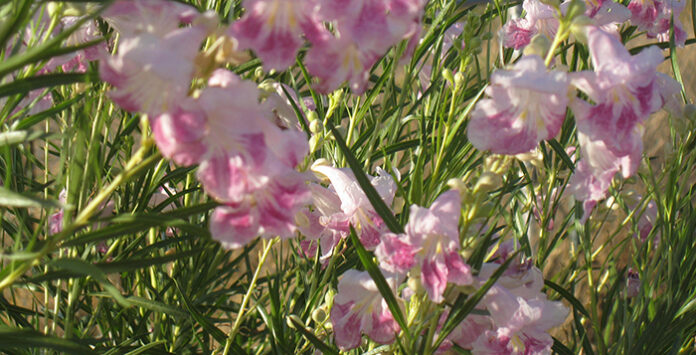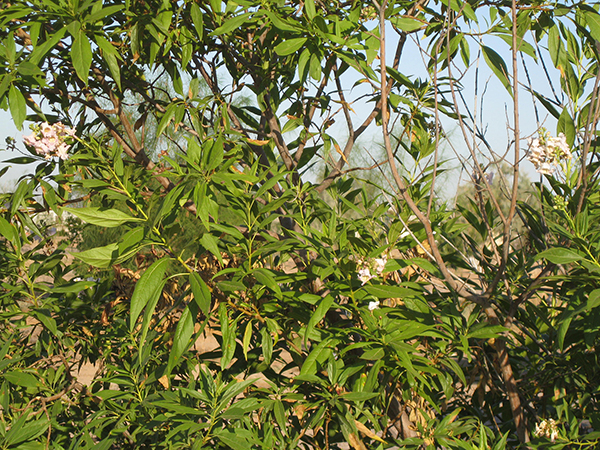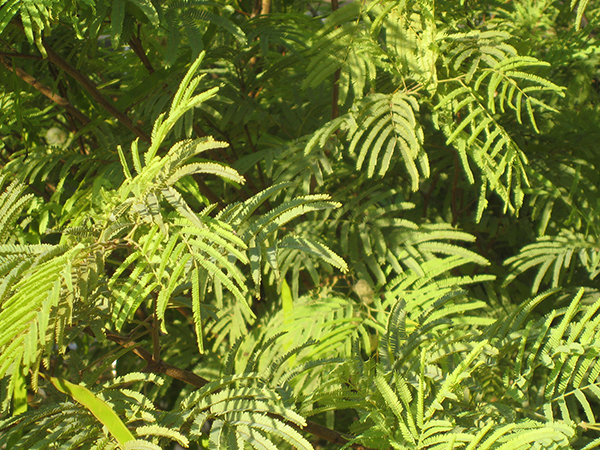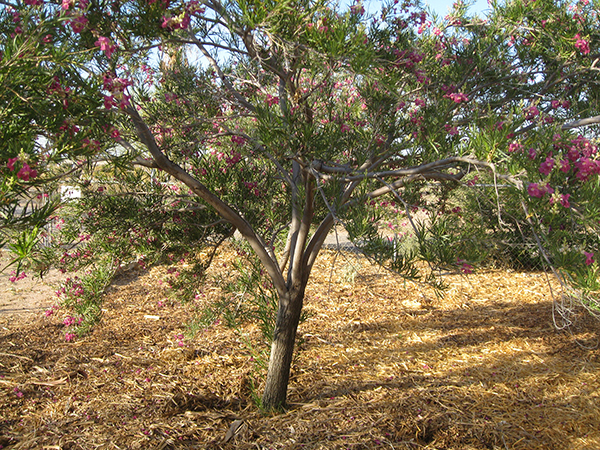By Betty Beeman
This is the time of year we would be grateful for some shade in our yards. Consider planting one or two hardy desert trees that will give you pleasant results next year.[quote_box_right]MARICOPA GARDENING TIPS
• Fertilize Bermuda grass lawns with nitrogen according to directions on the package.
• Apply one inch of water per week to Bermuda lawns.
• Raise the mowing height to 2.5 to 3 inches.
• Good time to plant bougainvillea, yellow bells, oleanders, acacias, mesquites and palo verdes. During their first few weeks they will need daily watering.
• End of August, plant seed for fall vegetables: Snap beans, bok choy, broccoli, Brussels sprouts, cabbage, Chinese cabbage, carrots, cauliflower, collard greens, corn, leeks and kale.[/quote_box_right]
There is more to picking the right tree than low-water consumption, rapid growth or frost tolerance. Other important considerations are the ultimate size, shape, leaf style and color. It’s hard to visualize what a five-gallon or a 15-gallon plant will look like when it reaches maturity.
Some other questions you need to ask yourself are:
• What will be under it, over it and around it?
• Do you want multiple branches and low limbs?
• Do you want to screen out ugly views?
• Are you willing to put up with thorns?
• Do you need something around your pool?
• Does your homeowners association have restrictions of certain trees?
Answers to these questions will help you make the right choices. I have been told by a Realtor that a mature desert tree will increase your property value by $500 to $1,000.
Popular varieties of palo verde, acacias and mesquite are obtainable at nurseries or plant sales. Other choices are also available, such as fruitless olive, ironwood, Texas ebony, anacacho orchid tree or the Mediterranean fan palm.
My personal favorite is the desert willow. It has beautiful light or dark purple flowers, provides filtered shade and can be grown as a bush or a tree that can reach 20 feet in height. No thorns.
As an added benefit, trees can help decrease heating and cooling costs for your home. Locate deciduous trees to shade the east- and west-facing exposures of your home during the summer. This will allow sunlight into the home during the winter when branches are bare of leaves.
Shade trees require occasional feeding and pruning as part of maintenance. Raking can be labor-intensive because shade trees produce a lot of leaves. Some have thorns that can be up to an inch long. Native trees also provide food, cover and nesting material for wildlife.
The Desert Botanical Gardens in Phoenix and in Tucson are living museums for desert plants. There, you can visit and see how the trees you are considering planting will look at maturity. Careful selection can ensure that the trees blend well with the overall design of the surrounding landscape.
You can also drive around your neighborhood, look at various nurseries or research on the Internet. A little preplanning can be of great benefit.
Plant Selection Tips: AMWUA.org
Questions?
Contact a Master Gardener volunteer:
520-374-6263
[email protected]
MAC-Pinal-MasterGardener.org
Betty Beeman is a Maricopa resident and a Pinal County Master Gardener.
This column appears in the August issue of InMaricopa.







![Elena Trails releases home renderings An image of one of 56 elevation renderings submitted to Maricopa's planning department for the Elena Trails subdivison. The developer plans to construct 14 different floor plans, with four elevation styles per plan. [City of Maricopa]](https://www.inmaricopa.com/wp-content/uploads/2024/04/city-041724-elena-trails-rendering-218x150.jpg)

![Affordable apartments planned near ‘Restaurant Row’ A blue square highlights the area of the proposed affordable housing development and "Restaurant Row" sitting south of city hall and the Maricopa Police Department. Preliminary architectural drawings were not yet available. [City of Maricopa]](https://www.inmaricopa.com/wp-content/uploads/2024/04/041724-affordable-housing-project-restaurant-row-218x150.jpg)










![Elena Trails releases home renderings An image of one of 56 elevation renderings submitted to Maricopa's planning department for the Elena Trails subdivison. The developer plans to construct 14 different floor plans, with four elevation styles per plan. [City of Maricopa]](https://www.inmaricopa.com/wp-content/uploads/2024/04/city-041724-elena-trails-rendering-100x70.jpg)

![Affordable apartments planned near ‘Restaurant Row’ A blue square highlights the area of the proposed affordable housing development and "Restaurant Row" sitting south of city hall and the Maricopa Police Department. Preliminary architectural drawings were not yet available. [City of Maricopa]](https://www.inmaricopa.com/wp-content/uploads/2024/04/041724-affordable-housing-project-restaurant-row-100x70.jpg)